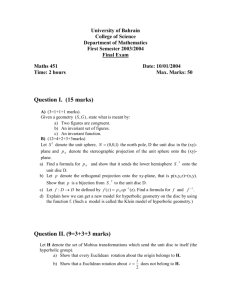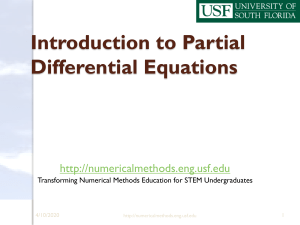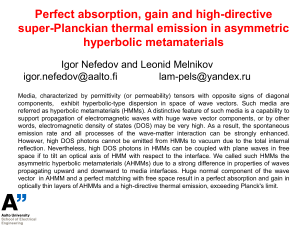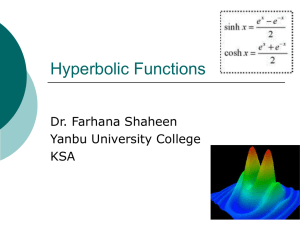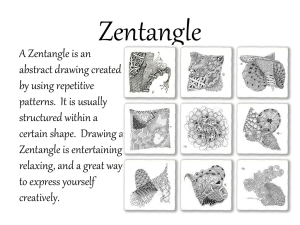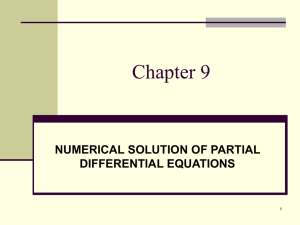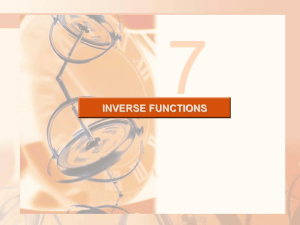which point does X map to?
advertisement
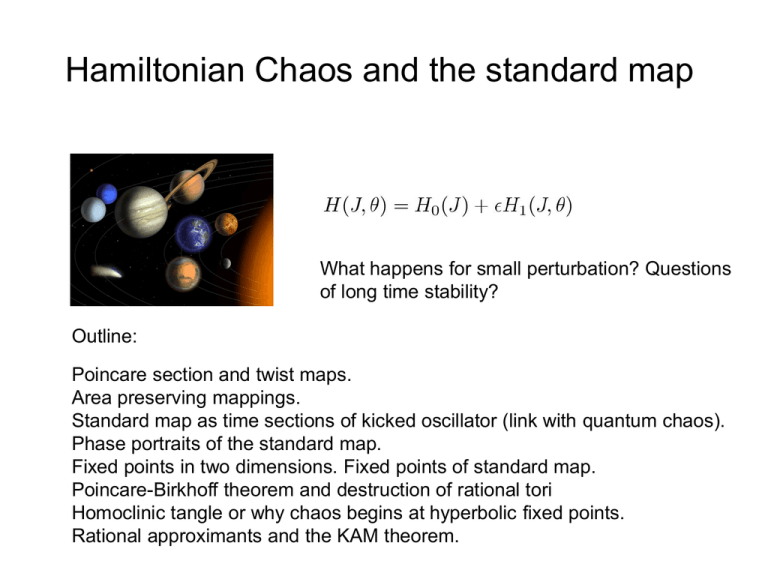
Hamiltonian Chaos and the standard map What happens for small perturbation? Questions of long time stability? Outline: Poincare section and twist maps. Area preserving mappings. Standard map as time sections of kicked oscillator (link with quantum chaos). Phase portraits of the standard map. Fixed points in two dimensions. Fixed points of standard map. Poincare-Birkhoff theorem and destruction of rational tori Homoclinic tangle or why chaos begins at hyperbolic fixed points. Rational approximants and the KAM theorem. Poincare section and twist maps Area preserving maps describe Hamiltonian system intersecting with Poincare section Area preserving property of twist maps Poincare-Cartan invarient Can be derived most elegantly from notions of sympleptic geometry. Conserving system Poincare section This can be generalised to the case of several variables and shows that the Poincare sections generate a “sympleptic mapping”. Discrete Hamiltonian approach to twist maps Map is area perserving The standard map “Kicked oscillator” Phase portraits of the standard map With no “kicking” the action variables are constants of motion; all tori are unperturbed. e = 0.00 Phase portraits of the standard map No (apparent) chaotic behaviour but appearance of elliptic and hyperbolic fixed points. e = 0.05 Hyperbolic fixed point Elliptic fixed point. Phase portraits of the standard map Many fixed points of the mapping appear in elliptic/hyperbolic pairs. e = 0.47 Phase portraits of the standard map At a critical value of the non-linearity parameter (or “kicking parameter”), orbits can traverse in all directions; this is the point at which the last tori is destroyed. Chaotic layer clearly seen at seperatrix. e = 0.97 Phase portraits of the standard map Chaotic “sea” now dominates phase space; the system is globally chaotic. Momentum is unbounded by any tori. e = 2.00 Analysis of fixed point types for two dimensional maps Tangent map at fixed point; can prove there is an invertable diffeomorphism connecting tangent map with local phase space. Elliptic fixed point Hyperbolic fixed point Parabolic fixed point T Analysis of the elliptic fixed point Since these vectors are linearly independent they completely describe the motion near the fixed point. Analysis of the hyperbolic fixed point Hyperbolic Hyperbolic with reflection Fixed points of the standard map Hyperbolic fixed point Elliptic fixed point Eigenvectors of hyperbolic point real; elliptic point complex. Fixed points of the standard map Note the change in the orientation of the “elliptic island” as the perturbation increases. Poincare-Birkhoff theorem Standard map Perturbed map Poincare-Birkhoff theorem Standard map Perturbed map Elliptic Hyperbolic Rational tori in the standard map Destruction of rational tori can clearly be seen in the standard map. Note that as the theorem predicts hyperbolic and elliptic fixed points come in pairs. 2 3 4 5 1 Motion near a hyperbolic fixed point: The homoclinic tangle Unstable manifold Intuition suggests this is not the generic case! – a simple “homoclinic connection” between the stable and unstable branches of the hyperbolic fixed point. May also have “heteroclinic connection” Stable manifold Since the map has inversion stable and unstable branches cannot cross: could construct a many-one map if this was the case. BUT: which point does X map to? Motion near a hyperbolic fixed point: The homoclinic tangle Unstable manifold Intuition suggests this is not the generic case! – a simple “homoclinic connection” between the stable and unstable branches of the hyperbolic fixed point. Stable manifold Only possibility is a loop! Motion near a hyperbolic fixed point: The homoclinic tangle Unstable manifold Intuition suggests this is not the generic case! – a simple “homoclinic connection” between the stable and unstable branches of the hyperbolic fixed point. Stable manifold Which must then be repeated infinitely many times!. Motion near a hyperbolic fixed point: The homoclinic tangle Area preservation implies that oscillations increase in amplitude near fixed point. Branches from different hyperbolic fixed points can also cross – “heteroclinic tangle” Chaotic behaviour has its origin near the hyperbolic fixed points; as seen in the standard map. Motion near a hyperbolic fixed point: The homoclinic tangle Iterate a line section; used 40,000 points online indicated by red line in graphs for hyperbolic fixed point 23 iterations, for elliptic fixed point 811 and 2000 iterations Hyperbolic fixed point Initial line section just visible here Elliptic fixed point Motion near a hyperbolic fixed point: The homoclinic tangle Tori generated by action with simple rational frequency are destoryed first by perturbation. However in general this phase space structure will be self-similar! Motion near a hyperbolic fixed point: The homoclinic tangle Chaos in rational tori can be seen in the solar system in asteroid belt, and also rings of Saturn: leads to gaps in the distribution of matter. KAM tori: or why some tori last longer than others Cantorous 3/2 5/8 Tori which survives the onset of chaos in phase space the longest has action given by the “golden mean”. Continued fractions and rational approximants (Known to Zu Congzhi in 5th centuary China) Continued fractions and rational approximants Golden mean is the “most irrational number”; torus destroyed last by chaos. The shortest KAM theorem slide ever Sufficiently irrational tori (i.e., winding number is irrational) are perserved for small enough perturbations. Preserved tori sattisfy: Summary of classical chaos Topologically transitive (mixing) Initial trajectories diverge rapidily, but the attractor of motion is fractal and has dimension greater than that of non-chaotic attractor Dynamics are unpredicatble. Universality in the standard map and different routes to chaos: period doubling route to chaos, intermittency, crisis. Fine structure of phase space near hyperbolic fixed points plays a crucial role in chaos. So what happens in quantum systems?
